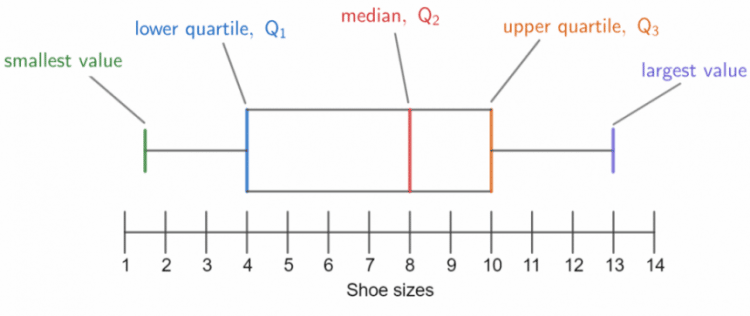Plots Level
In semiconductor electrochemistry, a Mott–Schottky plot describes the reciprocal of the square of capacitance versus the potential difference between bulk semiconductor and bulk electrolyte. In many theories, and in many experimental measurements, the plot is linear. The use of Mott–Schottky plots to determine system properties (such as flatband potential, doping density or Helmholtz capacitance) is termed Mott–Schottky analysis.[1][2][3]
The data show three notable trends. First, right-wing attacks and plots accounted for the majority of all terrorist incidents in the United States since 1994. In particular, they made up a large percentage of incidents in the 1990s and 2010s. Second, the total number of right-wing attacks and plots has grown substantially during the past six years.
- How to plot level curves of f(x,y) = 2x^2 +. Learn more about level curves, 3d plots, graphing.
- Five-Number Summary - Level 2. Level up identifying the upper and lower quartiles, maximum and minimum values, and median, necessary to make box and whisker plots, from data sets involving decimal values.
- Level Curves and Contour Plots Level curves and contour plots are another way of visualizing functions of two variables. If you have seen a topographic map then you have seen a contour plot. Example: To illustrate this we first draw the graph of z = x2 + y2. On this graph we draw contours, which are curves at a fixed height z = constant.
Consider the semiconductor/electrolyte junction shown in Figure 1. Under applied bias voltage the size of the depletion layer is
(1)
Here is the permittivity, is the elementary charge, is the doping density, is the built-in potential.
The depletion region contains positive charge compensated by ionic negative charge at the semiconductor surface (in the liquid electrolyte side). Charge separation forms a dielectriccapacitor at the interface of the metal/semiconductor contact. We calculate the capacitance for an electrode area as
(2)
replacing as obtained from equation 1, the result of the capacitance per unit area is
(3)
a equation describing the capacitance of a capacitor constructed of two parallel plates both of area separated by a distance .
Replacing equation (3) in (1) we obtain the result
(4).

Therefore, a representation of the reciprocal square capacitance, is a linear function of the voltage, which constitutes the Mott–Schottky plot as shown in Fig. 1c. The measurement of the Mott–Schottky plot brings us two important pieces of information.
- The slope gives the doping (semiconductor) density (provided that the dielectric constant is known).
- The intercept to the x axis provides the built-in potential, or the flatband potential (as here the surface barrier has been flattened) and allows establishing the semiconductor conduction band level with respect to the reference of potential.
In liquid junction the reference of potential is normally a standard reference electrode. In solid junctions, we can take as a reference the metal Fermi level, if the work function is known, which provides a full energy diagram in the physical scale. The Mott–Schottky plot is sensitive to the electrode surface in contact with solution, see Figure 2.
A more accurate analysis considering the statistics of electrons provides the following result for the size of the depletion region
(5)
in this case the Mott–Schottky equation is
(6)
When the interfacial barrier is of the order , special care has to be taken to interpret the capacitance measurement. In fact at these small voltages the capacitance makes a peak that can be used for the determination of the built-in voltage.
Plots Significance Levels
The Mott–Schottky analysis can more generally resolve a variable doping profile in the semiconductor as follows
(7)
The derivative gives the doping at the edge of the depletion region, . This method only provides a spatial resolution of the order of a Debye lengthsystems where more than one process gives a substantial kinetic response, it is necessary to adopt Electrochemical Impedance Spectroscopy that resolves the different capacitances in the system.[4] For example, in the presence of a surface state at the semiconductor/electrolyte interface, the spectra show two arcs, one at low frequency and another one at high frequency. The depletion capacitance leading to Mott–Schottky plot is situated in the high frequency arc, as the depletion capacitance is a dielectric capacitance. On the other hand, the low frequency feature corresponds to the chemical capacitance of the surface states. The surface state charging produces a plateau as indicated in Fig. 1d. Similarly, defect levels in the gap affect the changes of capacitance and conductance.
Another widely used method to scan deep levels in Schottky barriers is termed admittance spectroscopy and consists on measuring the capacitance at a fixed frequency while varying the temperature.
Surface photovoltage technique is used to determine the position of the band edges.
Plotline Of A Story
References[edit]
- ^ abBisquert, Juan (2014). Nanostructured Energy Devices: Equilibrium Concepts and Kinetics. CRC Press.
- ^Gelderman, K.; Lee, L.; Donne, S. W. (2007). 'Flat-Band Potential of a Semiconductor: Using the Mott–Schottky Equation'. Journal of Chemical Education. 84 (4): 685. doi:10.1021/ed084p685. ISSN0021-9584.
- ^Grundmann, Marius (2010). 'Section 20.2.2'. The Physics of Semiconductors. Springer. ISBN978-3-642-13883-6.
- ^Klahr, Benjamin; Gimenez, Sixto; Fabregat-Santiago, Francisco; Hamann, Thomas; Bisquert, Juan (2012). 'Water Oxidation at Hematite Photoelectrodes: The Role of Surface States'. Journal of the American Chemical Society. 134 (9): 4294–4302. doi:10.1021/ja210755h. hdl:10234/66297. ISSN0002-7863. PMID22303953.